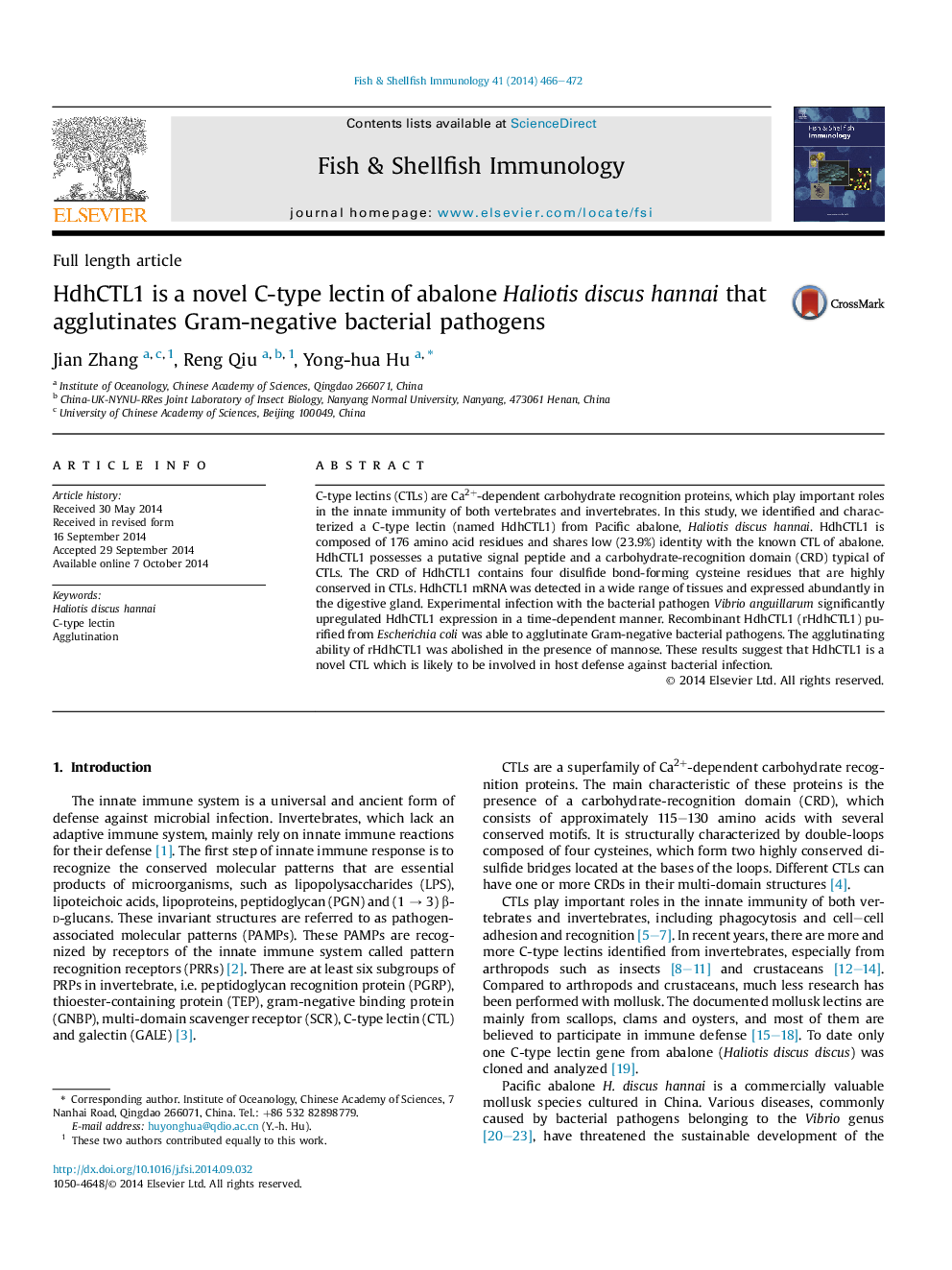| Article ID | Journal | Published Year | Pages | File Type |
|---|---|---|---|---|
| 2430954 | Fish & Shellfish Immunology | 2014 | 7 Pages |
•A C-type lectin (CTL), HdhCTL1, was identified in Pacific abalone.•HdhCTL1 possesses a carbohydrate-recognition domain typical of CTLs.•Bacterial infection enhanced HdhCTL1 expression in hemocyte and gill.•rHdhCTL1 exhibited apparent bacterial agglutinating activity.•HdhCTL1 is likely to be involved in host defense against bacterial infection.
C-type lectins (CTLs) are Ca2+-dependent carbohydrate recognition proteins, which play important roles in the innate immunity of both vertebrates and invertebrates. In this study, we identified and characterized a C-type lectin (named HdhCTL1) from Pacific abalone, Haliotis discus hannai. HdhCTL1 is composed of 176 amino acid residues and shares low (23.9%) identity with the known CTL of abalone. HdhCTL1 possesses a putative signal peptide and a carbohydrate-recognition domain (CRD) typical of CTLs. The CRD of HdhCTL1 contains four disulfide bond-forming cysteine residues that are highly conserved in CTLs. HdhCTL1 mRNA was detected in a wide range of tissues and expressed abundantly in the digestive gland. Experimental infection with the bacterial pathogen Vibrio anguillarum significantly upregulated HdhCTL1 expression in a time-dependent manner. Recombinant HdhCTL1 (rHdhCTL1) purified from Escherichia coli was able to agglutinate Gram-negative bacterial pathogens. The agglutinating ability of rHdhCTL1 was abolished in the presence of mannose. These results suggest that HdhCTL1 is a novel CTL which is likely to be involved in host defense against bacterial infection.
